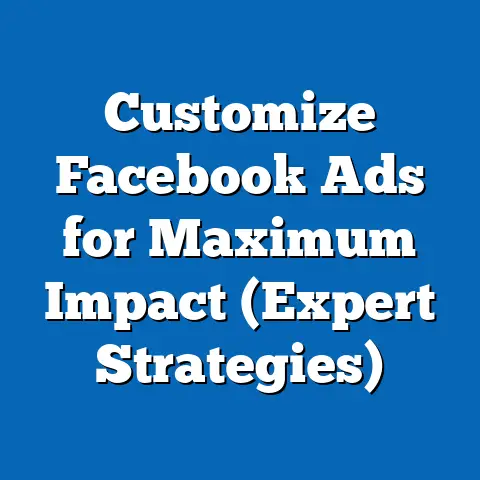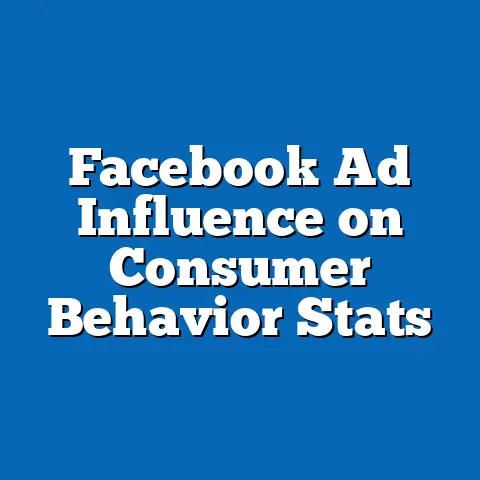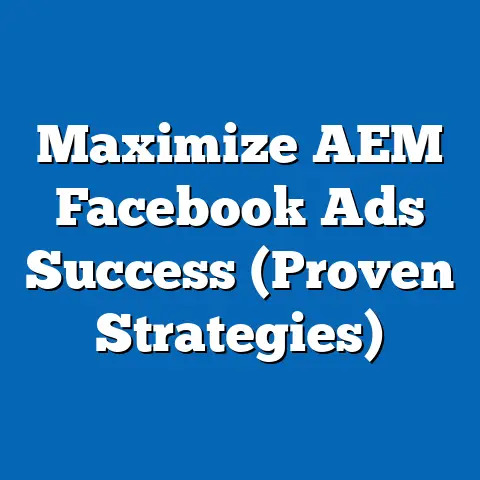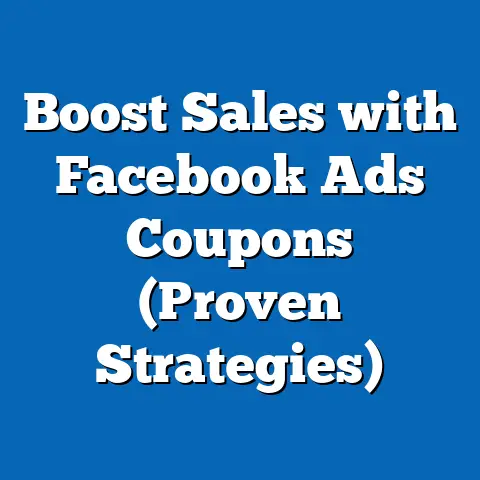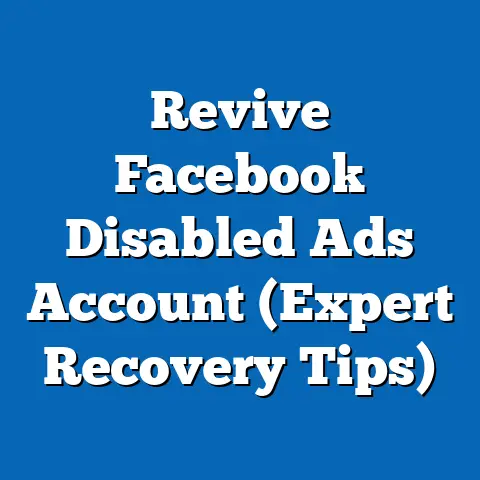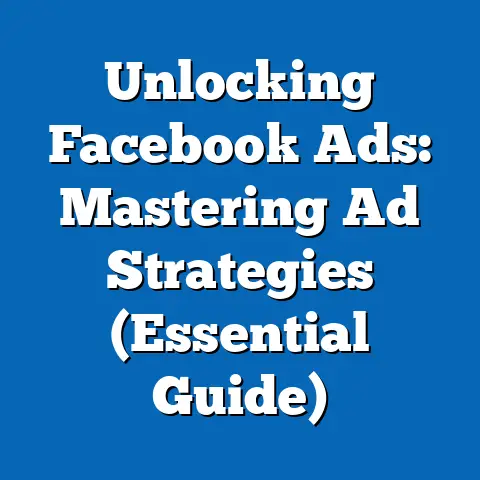Boost Results: Facebook Ad Benchmarks Explained (Key Insights)
I remember Sarah, a small business owner, looking utterly defeated. She’d poured money into Facebook ads, hoping to boost her online sales, but her efforts seemed to vanish into the digital abyss. Low engagement, dismal click-through rates, and barely any sales – she was throwing spaghetti at the wall and hoping something would stick. She was lost in a sea of metrics, not knowing what was good, bad, or even remotely acceptable.
Fast forward a few months, and Sarah is a different person. Armed with the knowledge of Facebook ad benchmarks, she’s now confidently navigating her ad performance. Her engagement rates have soared, her conversion rates have dramatically increased, and she has a crystal-clear understanding of her return on ad spend (ROAS). This newfound clarity allowed her to reinvest in effective strategies, creating a thriving online presence that’s actually driving business growth. What changed? She learned to speak the language of Facebook ads, using benchmarks as her Rosetta Stone.
In this guide, I will walk you through everything you need to know about Facebook ad benchmarks so you too can transform your campaigns from costly experiments into powerful growth engines.
Understanding Facebook Ad Benchmarks
Facebook ad benchmarks are like the North Star for your advertising campaigns. They are industry-standard metrics that provide a point of reference for evaluating the performance of your ads. Think of them as guideposts, helping you determine whether your campaigns are on the right track or if you need to adjust your course.
Why are benchmarks so important?
Without benchmarks, you’re essentially flying blind. You might be happy with a 1% click-through rate (CTR), but if the industry average is 2%, you’re leaving money on the table. Benchmarks provide context, allowing you to objectively assess your performance and identify areas for improvement.
- Cost-Per-Click (CPC): The average cost you pay each time someone clicks on your ad.
- Click-Through Rate (CTR): The percentage of people who see your ad and click on it.
- Conversion Rate: The percentage of people who click on your ad and then complete a desired action, such as making a purchase or filling out a form.
- Engagement Rate: The percentage of people who interact with your ad, such as liking, commenting, or sharing.
- Return on Ad Spend (ROAS): The amount of revenue you generate for every dollar you spend on advertising.
It’s crucial to understand that benchmarks aren’t one-size-fits-all. What’s considered a good CPC in the e-commerce industry might be terrible in the technology sector. This is why industry-specific benchmarks are so vital. They provide a more accurate reflection of what’s achievable within your specific niche.
Takeaway: Benchmarks are essential for evaluating your Facebook ad performance. They provide context, helping you identify areas for improvement and set realistic goals. Always consider industry-specific benchmarks for a more accurate assessment.
Key Facebook Ad Metrics to Track
Now that you understand the importance of benchmarks, let’s dive into the key metrics you should be tracking. Each of these metrics offers valuable insights into different aspects of your campaign performance.
Cost-Per-Click (CPC)
CPC is the amount you pay each time someone clicks on your ad. It’s a critical metric because it directly impacts your budget allocation and overall campaign efficiency. A high CPC can quickly drain your budget, while a low CPC allows you to reach more people for the same amount of money.
Why is CPC important?
- Budget Management: Understanding your CPC helps you predict how much you’ll spend to achieve your desired reach and traffic.
- Campaign Efficiency: A lower CPC means you’re getting more clicks for your money, improving your overall return on investment.
- Ad Relevance: A high CPC can indicate that your ad isn’t relevant to your target audience or that your ad copy and creative aren’t compelling enough.
How to interpret CPC:
A good CPC varies depending on your industry, target audience, and ad placement. However, as a general rule of thumb, you should aim for a CPC that’s below the industry average. If your CPC is consistently higher than the average, it’s time to re-evaluate your targeting, ad copy, and creative.
I once worked with a client in the travel industry whose CPC was sky-high. After analyzing their campaigns, I realized they were targeting a broad audience with generic ad copy. By narrowing their targeting and creating more specific, compelling ads, we were able to reduce their CPC by 40% and significantly increase their traffic.
Click-Through Rate (CTR)
CTR is the percentage of people who see your ad and click on it. It’s a measure of ad relevance and audience engagement. A high CTR indicates that your ad is resonating with your target audience, while a low CTR suggests that your ad isn’t capturing their attention.
Why is CTR important?
- Ad Relevance: A high CTR indicates that your ad is relevant to your target audience’s interests and needs.
- Audience Engagement: A compelling ad that sparks curiosity or solves a problem will naturally have a higher CTR.
- Quality Score: Facebook uses CTR as a factor in determining your ad’s quality score, which can impact your ad’s placement and cost.
How to interpret CTR:
Like CPC, a good CTR varies depending on your industry and target audience. However, a CTR of 1% or higher is generally considered good. If your CTR is consistently below 1%, it’s time to experiment with different ad copy, visuals, and targeting options.
I remember struggling to improve the CTR for a client in the fashion industry. We tried different ad formats, targeting options, and even ran A/B tests on our ad copy. Finally, we discovered that using user-generated content (UGC) in our ads significantly boosted our CTR. People were more likely to click on ads featuring real customers wearing the client’s clothing than on ads featuring professional models.
Conversion Rate
Conversion rate is the percentage of people who click on your ad and then complete a desired action, such as making a purchase, filling out a form, or signing up for a newsletter. It’s a critical metric for measuring the effectiveness of your campaigns in driving business results.
Why is conversion rate important?
- Business Results: Ultimately, your goal is to drive conversions, whether it’s sales, leads, or sign-ups. Conversion rate directly reflects your ability to achieve these goals.
- ROI Measurement: By tracking your conversion rate, you can accurately measure the return on your ad spend.
- Landing Page Optimization: A low conversion rate can indicate problems with your landing page, such as poor design, confusing navigation, or irrelevant content.
How to interpret conversion rate:
A good conversion rate varies widely depending on your industry, product, and target audience. However, a conversion rate of 2% or higher is generally considered good. If your conversion rate is consistently below 2%, it’s time to optimize your landing page and ensure that it aligns with your ad copy and creative.
I once helped a client in the real estate industry double their conversion rate by optimizing their landing page. We simplified the design, made the call-to-action more prominent, and added social proof in the form of customer testimonials. These simple changes had a dramatic impact on their conversion rate and lead generation.
Engagement Rate
Engagement rate is the percentage of people who interact with your ad, such as liking, commenting, or sharing. It’s a measure of how engaging and interesting your ad content is to your target audience.
Why is engagement rate important?
- Brand Awareness: High engagement can help increase brand awareness and reach, as people are more likely to share engaging content with their friends and followers.
- Audience Connection: Engaging content can help you build a stronger connection with your audience, fostering loyalty and advocacy.
- Algorithm Boost: Facebook’s algorithm favors ads with high engagement, giving them greater visibility and reach.
How to interpret engagement rate:
An engagement rate of 1% or higher is generally considered good. If your engagement rate is consistently below 1%, it’s time to experiment with different types of content, such as videos, images, and interactive polls.
I found that running contests and giveaways on Facebook was a great way to boost engagement for a client in the food industry. People love free stuff, and contests encourage them to like, comment, and share your ad with their friends.
Takeaway: Track these key metrics – CPC, CTR, Conversion Rate, and Engagement Rate – to gain a comprehensive understanding of your Facebook ad performance. Use these metrics to identify areas for improvement and optimize your campaigns for better results.
Industry Benchmarks and What They Mean
As I mentioned earlier, industry-specific benchmarks are crucial for accurately evaluating your Facebook ad performance. What’s considered a good CPC in one industry might be terrible in another. Let’s take a look at some key industry benchmarks and what they mean for your campaigns.
- Retail: The retail industry is highly competitive, with a lot of advertisers vying for the same audience. As a result, CPCs tend to be relatively high, averaging around \$1.32. CTRs are typically around 0.71%, and conversion rates average around 1.84%.
- E-commerce: Similar to retail, e-commerce is a competitive industry. CPCs average around \$1.17, CTRs around 0.78%, and conversion rates around 1.81%.
- Technology: The technology industry tends to have lower CPCs, averaging around \$0.84. CTRs are typically higher, around 0.91%, and conversion rates average around 2.31%.
- Service-Based Businesses: Service-based businesses often have lower CPCs, averaging around \$0.97. CTRs are typically around 0.80%, and conversion rates average around 2.03%.
Important Considerations:
- These are just averages: Your actual results may vary depending on your specific niche, target audience, and ad strategy.
- Benchmarks change over time: It’s important to stay up-to-date on the latest industry benchmarks.
- Focus on improvement: Don’t get too caught up in comparing yourself to the average. The most important thing is to continuously improve your own performance.
How to Use Industry Benchmarks:
- Identify your industry: Determine the industry that best represents your business.
- Research benchmarks: Look for reliable sources of industry benchmarks, such as marketing research firms, industry associations, and advertising platforms.
- Set realistic goals: Use the benchmarks to set realistic goals for your campaigns.
- Track your performance: Monitor your key metrics and compare them to the benchmarks.
- Adjust your strategy: If your performance is below the benchmarks, adjust your strategy to improve your results.
Takeaway: Industry benchmarks provide valuable context for evaluating your Facebook ad performance. Use them to set realistic goals, track your progress, and identify areas for improvement.
Analyzing Performance Against Benchmarks
Once you’ve established your benchmarks, it’s time to analyze your ad performance against them. This involves gathering data, interpreting the results, and identifying areas for improvement.
Step 1: Gather Data:
The first step is to gather data from Facebook Ads Manager and other analytics tools. Facebook Ads Manager provides a wealth of information about your campaigns, including:
- Impressions: The number of times your ad was shown.
- Reach: The number of unique people who saw your ad.
- Clicks: The number of times people clicked on your ad.
- CPC: The average cost per click.
- CTR: The click-through rate.
- Conversions: The number of conversions generated by your ad.
- Conversion Rate: The conversion rate.
- Engagement: The number of likes, comments, and shares.
- Engagement Rate: The engagement rate.
- ROAS: The return on ad spend.
Step 2: Interpret the Results:
Once you’ve gathered the data, it’s time to interpret the results. Compare your key metrics to the benchmarks you’ve established. Are you above or below the average? Are there any trends or anomalies in your data?
Step 3: Identify Areas for Improvement:
Based on your analysis, identify areas where you can improve your performance. For example, if your CPC is higher than the industry average, you might need to re-evaluate your targeting or ad copy. If your conversion rate is low, you might need to optimize your landing page.
Step 4: Take Action:
Once you’ve identified areas for improvement, take action to address them. This might involve:
- Adjusting your targeting: Narrowing your audience or experimenting with different demographics and interests.
- Optimizing your ad copy: Writing more compelling headlines, descriptions, and calls-to-action.
- Improving your visuals: Using high-quality images and videos that capture attention.
- Optimizing your landing page: Simplifying the design, making the call-to-action more prominent, and adding social proof.
- A/B testing: Experimenting with different versions of your ads and landing pages to see what performs best.
Takeaway: Analyzing your performance against benchmarks is an ongoing process. Continuously monitor your metrics, identify areas for improvement, and take action to optimize your campaigns for better results.
Case Studies and Real-World Examples
To further illustrate the power of Facebook ad benchmarks, let’s take a look at some real-world examples of businesses that have successfully leveraged them to enhance their campaign performance.
Case Study 1: E-commerce Store Boosts Conversions by 50%
An e-commerce store selling handmade jewelry was struggling with low conversion rates on their Facebook ads. After analyzing their data, they realized that their conversion rate was significantly below the industry average for e-commerce businesses.
They decided to focus on optimizing their landing page to improve their conversion rate. They simplified the design, added high-quality images of their jewelry, and included customer testimonials. They also made the call-to-action more prominent and offered a discount for first-time buyers.
As a result of these changes, their conversion rate increased by 50%, and their sales skyrocketed.
Case Study 2: Service-Based Business Reduces CPC by 30%
A service-based business offering home cleaning services was paying a high CPC on their Facebook ads. After analyzing their data, they realized that they were targeting a broad audience with generic ad copy.
They decided to narrow their targeting to focus on specific demographics and interests, such as homeowners, busy professionals, and families with young children. They also created more specific ad copy that highlighted the benefits of their services for each target audience.
As a result of these changes, their CPC decreased by 30%, and they were able to reach more people for the same amount of money.
Case Study 3: Local Restaurant Increases Engagement by 40%
A local restaurant was struggling to generate engagement on their Facebook ads. After analyzing their data, they realized that their ads were not capturing the attention of their target audience.
They decided to experiment with different types of content, such as videos, images, and interactive polls. They also ran contests and giveaways to encourage people to like, comment, and share their ads.
As a result of these changes, their engagement rate increased by 40%, and they were able to build a stronger connection with their audience.
Lessons Learned:
- Focus on the right metrics: Identify the key metrics that are most important for your business goals.
- Analyze your data: Regularly analyze your data to identify areas for improvement.
- Experiment and test: Don’t be afraid to experiment with different strategies and test what works best for your audience.
- Stay up-to-date: Keep up with the latest industry trends and best practices.
Takeaway: These case studies demonstrate the power of Facebook ad benchmarks in improving campaign performance. By focusing on the right metrics, analyzing your data, and experimenting with different strategies, you can achieve significant results.
Conclusion
In conclusion, understanding and leveraging Facebook ad benchmarks is crucial for achieving success with your advertising campaigns. By using these benchmarks as a tool for continuous improvement and optimization, you can refine your strategies, achieve better results, and ultimately drive business growth.
Remember, the key takeaways are:
- Benchmarks provide context: They help you understand whether your performance is good, bad, or average.
- Industry-specific benchmarks are essential: They provide a more accurate reflection of what’s achievable within your specific niche.
- Analyzing your data is key: Continuously monitor your metrics, identify areas for improvement, and take action to optimize your campaigns.
- Don’t be afraid to experiment: Try different strategies and test what works best for your audience.
So, embrace the data-driven approach, refine your strategies, and start achieving better results in your Facebook advertising campaigns today!
Call to Action:
I’d love to hear about your experiences with Facebook ads and benchmarks. What challenges have you faced? What strategies have worked well for you? Share your thoughts and insights in the comments below. Also, if you found this article helpful, please share it on social media to help others improve their Facebook ad performance. Let’s foster a discussion within the community and learn from each other!

